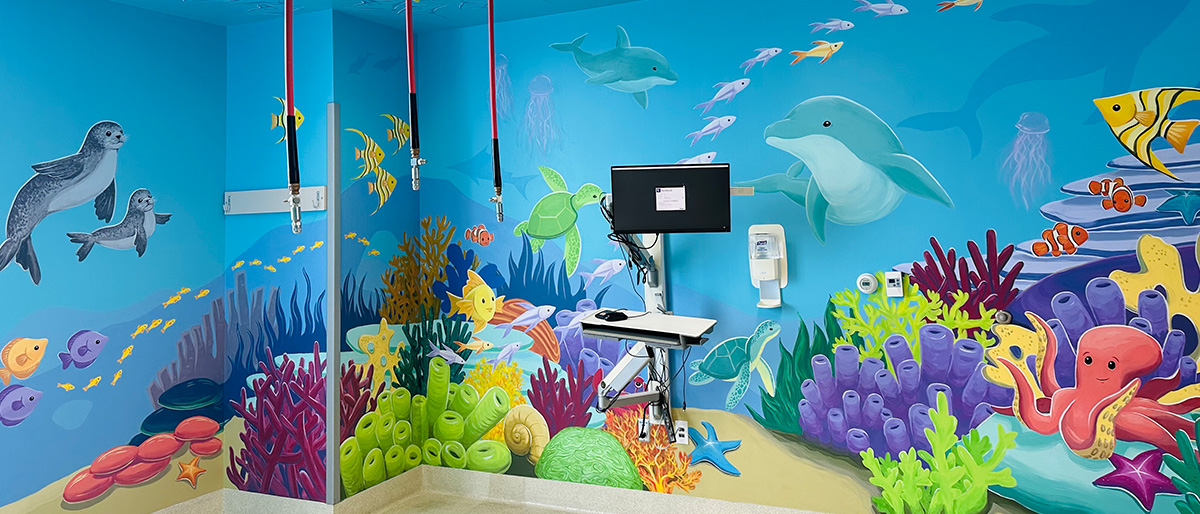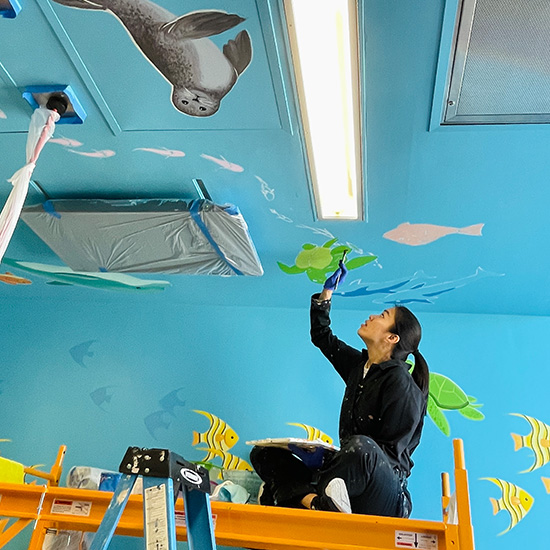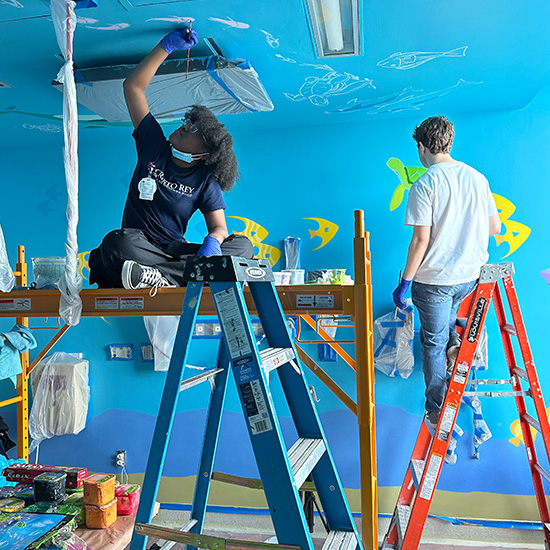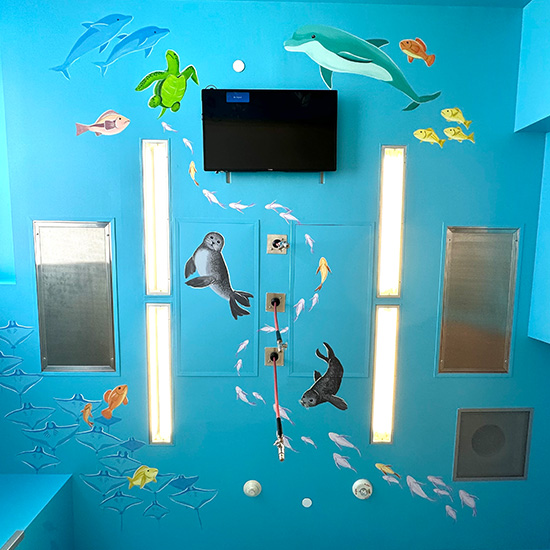Healing waters
UTSW graduate leads effort to create mural of sea life to soothe Parkland pediatric burn patients

It started with fish stickers scattered on the bare white walls of a small room in the Parkland Burn Center.
Over the next three months, the artistic project exploded into an immersive mural covering the ceiling and walls with realistic images of an ocean filled with happy sea creatures. The goal? Provide a healing environment for pediatric burn patients while they undergo difficult and often painful procedures.

Christine Chen, M.D., who graduated from UT Southwestern Medical School in May, designed the mural. A team of 19 volunteers and medical students spent more than 175 hours – many of them while balancing on scaffolds and ladders – painting 150 turtles, dolphins, and other sea creatures to inhabit the underwater scene. They began in March and finished in May. But this is no ordinary mural of marine life.
The collaboration involved UTSW and Cristo Rey Dallas College Prep students plus community volunteers who responded to this innovative idea from the burn unit’s nursing and child specialist teams. The Cristo Rey students were part of a work study program led by Kavita Bhavan, M.D., Professor of Internal Medicine at UT Southwestern and Chief Innovation Officer for Parkland Health. The Center of Innovation and Value at Parkland (CIVP) has a partnership with Cristo Rey Dallas College Prep and established a Health Ambassador Program to engage high school students to mitigate the health disparities affecting their underserved communities in Southeast Dallas.

“Now instead of focusing on painful treatments, children can count purple fish,” Dr. Chen said.
That’s exactly what Dr. Chen had in mind. While in medical school, the self-taught artist was contacted by the CIVP about working on a mural. The Center, which focuses on health care delivery and innovation, organized the mural project and brought together stakeholders to participate. CIVP is an innovation center whose mission is to improve value by achieving exemplary outcomes that matter to patients while lowering per capita cost of care.
The Parkland burn unit team received feedback from its survivorship group on the mural theme. The wound care room is often referred to as the “Tank” because of the large amount of water used to soak patients’ bandages and clean their wounds. Patients are partially submerged in a tank while their wounds are debrided and dressed.
“With all the water used here, the idea is that this underwater mural theme helps make kids feel immersed in a magical ocean seascape while getting their wound care,” Dr. Chen said. “So I really tried to channel that idea too when developing this design.”
When she heard that nurses played the game “I Spy” with fish stickers, she ran with the idea.
“I loved the game and worked to incorporate elements in my mural design that the nurses and child life specialists could use for engaging the kids,” she said. “I also loved the connection of the underwater theme to the purpose of the room itself.”

Dr. Chen used a projector to draw the sea creatures on the ceiling and walls. Since patients often lie on their backs during treatment, she thought it was important to have plenty of sea creatures on the ceiling.
But Dr. Chen found that lying on her back painting the creatures was no easy task.
“The part I am most proud of is the design on the ceiling, which was created to make it feel like you are looking up at the fish and sea creatures as they swim above you,” she said. “Also, since patients spend most of their time in the tanks lying down and staring up at the ceiling or back wall, we really wanted those scenes to draw their eye and be filled with vibrant colors and sea creatures.”
Some of her favorite features in the mural are the handprints of two pediatric burn patients.
“We painted their hands, and they added their handprints to the sand in the mural,” she said.
Doing the project was tremendously rewarding, Dr. Chen said, and it provided an opportunity to blend her love for visual communication with her passion for medicine.
“The mural sits at the intersection of art and patient care,” she said. “It is not only beautiful and enjoyable to look at, but it is also a key tool in assuaging patients during painful procedures.”
Dr. Chen, who started her internal medicine residency at the Mayo Clinic in July, said she appreciated supporting the hospital that shaped her training.
“It was an honor to be able to give back to future generations of patients by leaving behind something lasting on the walls of Parkland through this immersive mural,” she said. “This project is truly one of the most joyful experiences I have had the privilege of working on in my four years here.”

